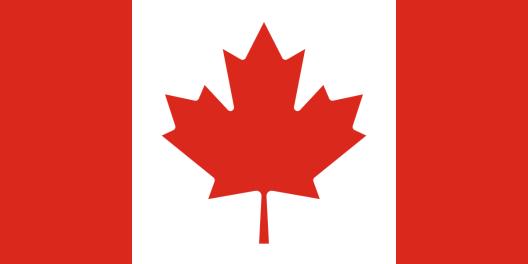Donate to Support Supercluster
Your support makes the Astronaut Database and Launch Tracker possible, and keeps all Supercluster content free.
SUPPORTSupercluster on Patreon
Your support makes the Astronaut Database and Launch Tracker possible, and keeps all Supercluster content free.
SUPPORT









































This goes
to space
Dragon - Endeavour (Ax-1)
Dragon - Endeavour
Meet the first privately developed spacecraft to carry humans into Earth orbit.
The Dragon Endeavour first flew Bob Behnken and Doug Hurley to the International Space Station on the Demo-2 mission for NASA in May of 2020. The capsule returned human launch capability to NASA as part of the Commercial Crew Program, which will serve U.S., Canadian, Japanese, and European astronauts as well as Russian cosmonauts.
During Demo-2, Bob and Doug named this Dragon in recognition of the Space Shuttle Endeavour - the ship that flew them both to space for the first time.
Once refurbished, Endeavour launched Crew-2, the second operational Commercial Crew flight which launched crew to the ISS for a six-month mission.
Now, Endevour will carry the first-ever all-private astronaut crew to the International Space Station.
Axiom-1 crew will spend 8 days on station working with the current ISS astronauts to conduct 25 planned experiments including self-assembling technology for satellites and future space habitats, cancer stem cell study, and air purification.
“As the first step on a path to building a diverse, thriving economy in low-Earth orbit, Axiom has partnered with leaders in academia and industry to bring new users and new investigations in research to the space station,” said Christian Maender, director of In-space Manufacturing and Research for Axiom Space.
Some of the investiagtions and experiments Ax-1 plans to complete include:
TESSERAE (Tessellated Electromagnetic Space Structures for the Exploration of Reconfigurable, Adaptive Environments) is a multi-year research program exploring self-assembly methods for in-space construction.
The JAMSS photocatalyst air purification device will launch on Ax-1 for a technical demonstration to verify the performance of the improved filter. This experiment also will deploy a control device without photocatalytic LEDs, to evaluate the JAMSS photocatalytic filter.
Translational Research Institute for Space Health (TRISH) is conducting biomedical research on each of the crewmembers both before the launch and after their return to Earth. A variety of data will be collected, including physiological data, a battery of cognitive tests, balance and perception tests, and visual acuity tests.
Axiom Space was founded in 2016 with the goal of creating the world's first commercial space station.
Dragon for crew (general)
This SpaceX capsule is designed to carry a crew of four to the International Space Station or other Earth orbit destinations after being launched atop a reusable Falcon 9 rocket.
The capsule includes a launch abort system, an advanced environmental control and life support system that keeps the crew safe during flight, and state-of-the art touchscreen interfaces.
Crew Dragon is designed to operate autonomously but can be manually controlled by SpaceX teams in Hawthorne, California, and the astronauts on board.
Under the contracted crew rotation missions to the Space Station for NASA, Dragon will carry a regular crew of 4 international astronauts.
Crew Dragon is also available for private missions to Earth orbit for paying customers.
For missions to the Station, Crew Dragon can remain in orbit for up to 6 months.

On this
rocket
Falcon 9 with Dragon (Crew)
Falcon 9 is a reusable, two-stage rocket designed and manufactured by SpaceX for the reliable and safe transport of people and payloads into Earth orbit and beyond.
Falcon 9 is the world’s first orbital-class reusable rocket.
Stats
Completed missions: 468
Total landings: 423
Total reflights: 394
The Falcon 9 has launched 62 humans into orbit since May 2020
Specs
Height: 70 m / 229.6 ft
Diameter: 3.7 m / 12 ft
Mass: 549,054 kg / 1,207,920 lb
Payload to Low Earth Orbit (LEO): 22,800 kg / 50,265 lb
Payload to Geostationary Transfer Orbit (GTO): 8,300 kg / 18,300 lb
Payload to Mars: 4,020 kg / 8,860 lb
On January 24, 2021, Falcon 9 launched the first ride-share mission to Sun Synchronous Orbit. It was delivering a record-setting 143 satellites to space. And while this was an important mission for SpaceX in itself, it was also the moment Falcon 9 overtook United Launch Alliance’s Atlas V for the total number of consecutive successful launches.
SpaceX’s Falcon 9 had become America’s workhorse rocket, launching 31 times in 2021. It has already beaten that record this year, launching almost an average of once a week. While most of the launches deliver Starlink satellites to orbit, the company is still launching the most commercial payloads to orbit, too.
Falcon 9 is a medium-lift launch vehicle, with the capability to launch over 22.8 metric tonnes to low earth orbit. Unlike any other rocket, its first stage lands back on Earth after separating from its second stage. In part, this allows SpaceX to offer the cheapest option for most customers with payloads that need to reach orbit.
Under its ride-share program, a kilogram can be placed in a sun-synchronous orbit for a mere 1.1 million dollars, far cheaper than all other currently operating small satellite launch vehicles.
The reusability and fast booster turnaround times have made Falcon 9 the preferred choice for private companies and government agencies. This has allowed SpaceX to capture a huge portion of the launch market.
Protecting the Crew
On the launch pad, the crew will board Dragon prior to fueling of the rocket.
Dragon's abort system will be armed and ready to pull the crew away from Falcon 9 in the event a critical issue develops during fueling.
The launch to a 200 x 200 km orbit will take just under 9 minutes.
Dragon and its crew will then separate from the Falcon 9 second stage 11 minutes after liftoff from the Kennedy Space Center.
Photo courtesy of SpaceX

From this
launch site
LC-39A - Kennedy Space Center, Florida
Launch Complex 39A (LC-39A) is a historic launch site located at NASA's Kennedy Space Center in Florida. Originally constructed in the late 1960s, LC-39A was designed to support the Apollo program, including the groundbreaking Apollo 11 mission that first landed humans on the Moon in 1969. The pad also played a crucial role in launching Skylab missions and was instrumental during the Space Shuttle era, including the launch of the first Space Shuttle, Columbia, on STS-1 in 1981.
In 2014, SpaceX leased LC-39A from NASA and undertook extensive refurbishments to adapt the pad for its Falcon 9 and Falcon Heavy rockets. These upgrades involved significant modifications to the pad's infrastructure to meet the requirements of SpaceX’s rockets. Since then, LC-39A has become a vital launch site for SpaceX, supporting a range of missions including crewed flights under NASA's Commercial Crew Program.
Under SpaceX's management, LC-39A has been the site of several landmark events. It hosted the first Falcon 9 launch from the pad on March 30, 2017, and was the launch site for the historic Falcon Heavy debut on February 6, 2018, which was the most powerful rocket in operation at that time. Additionally, LC-39A was the launch site for the first crewed flight of the Crew Dragon spacecraft on May 30, 2020, marking the first crewed spaceflight from U.S. soil since the end of the Shuttle program.
Today, LC-39A remains a critical asset for SpaceX, supporting both crewed and uncrewed missions. It continues to serve as a launch site for Falcon 9 and Falcon Heavy rockets and is expected to play a central role in future missions, including those aimed at lunar exploration and beyond. The pad's rich history and ongoing significance highlight its importance in the broader context of space exploration.
Photo courtesy of Jenny Hautmann for Supercluster

Dragon
goes here
ISS - Harmony Module (IDA-3)
The Harmony module, also known within NASA as Node-2, was launched to the International Space Station (ISS) in October 2007 on the STS-120 mission of Shuttle Discovery.
Harmony serves as the gateway between the US scientific and living modules and the European Space Agency's Columbus laboratory and Japan's Kibo complex.
The module is equipped with two docking ports for US crew (Dragon and Starliner) and cargo (Dragon) spacecraft and also has one berthing port that can be used for either Northrop Grumman's Cygnus or Japan's HTV cargo ships.
Picture: A cargo Dragon docked to Harmony's zenith, or space-facing docking port. Part of Japan's Kibo complex can been seen to the left of Dragon. Credit: NASA

Booster
lands here
A Shortfall of Gravitas
A Shortfall of Gravitas" (ASOG) is one of SpaceX’s Autonomous Spaceport Drone Ships, designed to recover Falcon 9 rocket boosters at sea. Operating primarily in the Atlantic Ocean from Port Canaveral, Florida, ASOG joined SpaceX’s fleet in 2021. It plays a crucial role in SpaceX's reusability program, enabling the recovery and refurbishment of rocket boosters for future missions.
The name "A Shortfall of Gravitas" is inspired by science fiction author Iain M. Banks' Culture series, known for its playful and philosophical ship names. ASOG is fully autonomous, capable of sailing to its designated landing area and maintaining position without the need for a tugboat. Equipped with advanced thrusters, it ensures precise positioning even in challenging weather conditions and features a large landing platform for booster recovery.
ASOG is essential for missions requiring high velocities or distant orbits where landing on solid ground is not feasible. By recovering boosters at sea, ASOG helps SpaceX reduce costs and enhance the sustainability of spaceflight.
Photo courtesy to Jenny Hautmann for Supercluster

Here's where to view Axiom Mission 1
Viewing Sites
- Alan Shepard Park
- A. Max Brewer Parkway Bridge
- Saturn V Building / Banana Creek
- Cherie Down Park
- Cocoa Beach Pier
- Jetty Park
- Kennedy Space Center Visitor Complex
- Lori Wilson Park
- Playalinda Beach
- Rotary Riverfront Park
- Sand Point Park
- Sidney Fischer Park
- Space View Park
GET THE SUPERCLUSTER APP
THE SUPERCLUSTER PODCAST
A podcast exploring the amazing milestones that changed space history, the wildest ideas that drive our future, and every development in this new Golden Age of Space.
Donate to support
Your support makes the Astronaut Database and Launch Tracker possible, and keeps all Supercluster content free.
SupportCOPYRIGHT 2021 SUPERCLUSTER LLC





